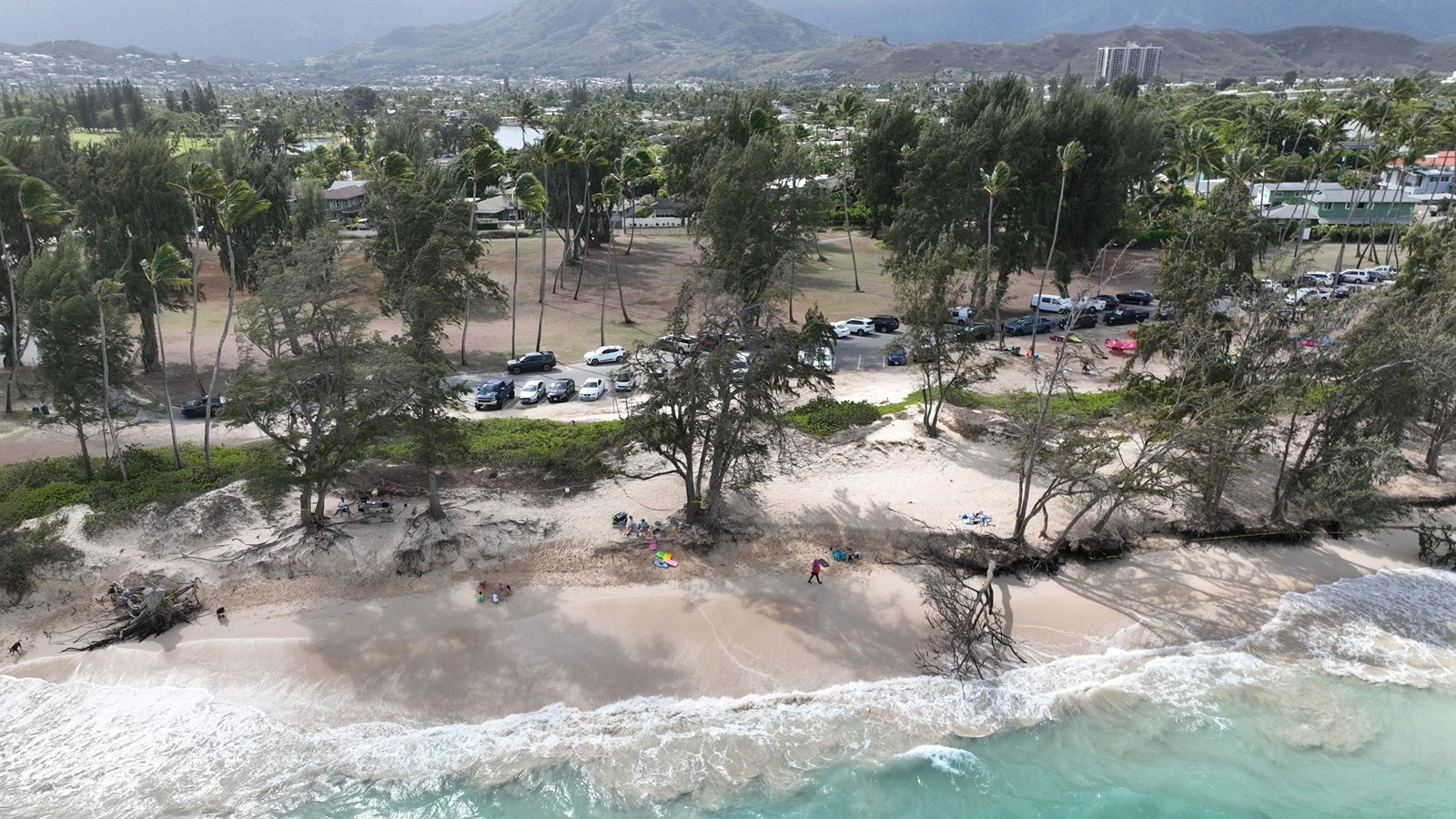There's a new way to get weather data from locations across the Islands — information that goes far beyond the observations you can make by looking out the window.
The University of Hawai‘i at Mānoa on Wednesday launched a new real-time weather dashboard with data from dozens of monitoring stations across the state, what UH says is a "major milestone" in the Hawai‘i Mesonet project.
Project lead Tom Giambelluca, a professor in the UH Department of Geography and Environment, told reporters during a press conference Wednesday that he received a National Science Foundation grant in 2021 to establish a state-of-the art, statewide weather and climate monitoring network in Hawai‘i, which is currently being built out. There are currently 65 stations out of an eventual 100-plus, he said.
"We founded this to serve many purposes, such as to support weather forecasting, natural resource management, farming, ranching, emergency management and really, in general, to be able to deal with extreme weather, to be prepared for extreme weather," Giambelluca said. "The Hawai‘i Mesonet has become already, an essential tool for many purposes ... and it serves a major role in ensuring public safety in the state."
From the start, though, he said the project team knew there would be little value if they couldn't get the data to the people who need it — and get it to them on time and in real time.
"That's why we're so excited to be able to launch this new resource, this new dashboard that we think is an excellent tool to make the data available to all those who need it."
Check out the dashboard here.
A map shows active, inactive and planned weather stations on each island — or you can view a table with the same information. Clicking on a specific station takes visitors to a page that shares current conditions and measurements like rainfall, temperature, wind speed, soil moisture, solar radiation and relative humidity, as well as conditions for the last one, three and seven days.
What does this mean for you?
Giambelluca reiterated that this network provides information for multiple purposes, "many of which are important to everyday citizens, everyday residents of the state of Hawai‘i."
Weather forecasting is one of its primary purposes — data goes into weather models that are used to forecast the weather each day, Giambelluca explained. Data is also used during "extreme events," he continued, adding that a local meteorologist recently said they were monitoring data from Mesonet stations live during potential flood events.
It's also useful for other activities across the state, like ranching and farming he said, "but just being able to know what's going on in your neighborhood with really high quality data, up-to-date, and measurements of not just the routine variables of temperature and rainfall, but a really wide range of variables that tell you all about the conditions."
Giambelluca says 21 variables are measured at most of the stations. Sensors are scanned once per second, with averages recorded every five minutes and transmitted every 15 minutes.
"We feel like this is really a big step up from what has been available."
Pacific Islands Climate Adaptation Science Center University Consortium Director Ryan Longman detailed even more uses for the data — by property owners, farmers and even conservationists.
"When you think of the average resident, I can think of someone living in Hanalei that has a property close to the river that might want to monitor rainfall and think about potential impacts of a heavy rainfall event," he said. "I can think about a rancher that has a pasture co-located near a station [who] can get an idea of how much it rained in the last 24 hours to think about things like supplemental watering or supplemental feeding if the grass isn't growing. I can think of a person that might be installing solar radiation, and not sure how many panels to put on."
The data could also be used, for further example, by conservationists planning a restoration or planting activity who could look at information about the soil moisture or even the current weather conditions to determine whether it's a good day to do such work, he continued.
According to the university, data from the system is stored in the Hawai‘i Climate Data Portal, which pulls data from multiple sources and can be found here.
The researchers also were asked whether this data can be used as a replacement for federal agencies like the National Oceanic Atmospheric Administration, or NOAA, and the National Weather Service, or NWS, which are facing potential cuts.
Giambelluca said it's important "we have our own network that is locally designed and locally operated, that is, we hope, going to be insulated from possible future federal cuts. But that means we'll have to find sources of funding to continue to maintain the system from state sources."
According to Giambelluca, under current conditions, it's estimated to take a minimum of $600,000 a year to continue operations. Funding right now comes from a combination of federal and state sources.
The Hawai‘i Mesonet program is part of a national mesonet program operated by NOAA, which has a special program that "essentially pays" for the data provided to the NWS, he explained.
"If that program is sustained, and we're hopeful that it will be, it will pay for about roughly 40% of the cost that we estimate we'll have ongoing for operation and maintenance of the network and of the data management side."
For the remaining 60%, he said the project is seeking support from the state.
Stephanie Salmons can be reached at stephanie@alohastatedaily.com.





